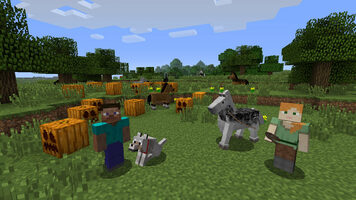Minecraft servers are poised to shape the future of multiplayer gaming and virtual collaboration due to their flexibility, scalability, and the immense creative potential they offer. As one of the most popular sandbox games in the world, Minecraft has created a unique platform where players can build, explore, and engage in diverse experiences. But beyond simply being a game, Minecraft has evolved into a dynamic ecosystem where players can collaborate, share resources, and create experiences together, making it a powerful tool for community-driven multiplayer gameplay and virtual collaboration. One of the primary reasons Minecraft servers stand out in the realm of multiplayer gaming is their customization options. Server administrators can tailor their server settings, game modes, and environments to suit the needs of the community. Whether it is survival gameplay, creative building, role-playing, or competitive challenges, there is virtually no limit to the types of experiences that can be crafted. These customizations allow for an unparalleled variety of gameplay that traditional multiplayer games cannot match, offering unique experiences that keep players engaged long-term.

Furthermore, Minecraft’s ability to support large communities is another significant factor in its growing relevance for multiplayer gaming. Servers can accommodate hundreds, or even thousands, of players simultaneously, allowing for massive collaborative projects and competitions. The sense of scale and the ability to join forces with people from around the world fosters a strong sense of community, where players can work together on intricate builds, engage in complex role-playing scenarios, or participate in large-scale events. This scalability is crucial for multiplayer gaming’s future, as the demand for more expansive, interactive environments increases. Minecraft servers also serve as platforms for virtual collaboration, far beyond the scope of just entertainment. Many institutions, such as schools and companies, have recognized the game’s potential as a collaborative tool. For example, Minecraft is often used in educational settings to teach subjects like history, architecture, and coding, as students collaborate in building models, simulating real-world structures, or exploring creative problem-solving activities. The game’s open-world nature encourages collaboration in a way that other tools and platforms struggle to replicate.
It fosters teamwork, communication, and strategic thinking in a non-traditional, gamified environment that makes learning and working together fun and engaging. Additionally, Minecraft servers are increasingly being used for social interaction, events, and even business ventures. Virtual events, such as concerts, conferences, or festivals, have been held within Minecraft servers, bringing people together for shared experiences in a fully immersive virtual world. As technology advances, the integration of virtual and augmented reality could enhance the experience, further blurring the line between gaming and real-world collaboration and get more info at https://topminecraftservers.org. Minecraft servers are rapidly emerging as one of the most versatile and impactful elements in multiplayer gaming and virtual collaboration. Their capacity for customization, scalability, and fostering collaboration makes them a powerful tool for connecting players and facilitating meaningful interactions. As the world increasingly shifts toward digital and virtual spaces, Minecraft’s role in shaping the future of online interaction and teamwork will only continue to grow, creating endless possibilities for entertainment, education, and business.
